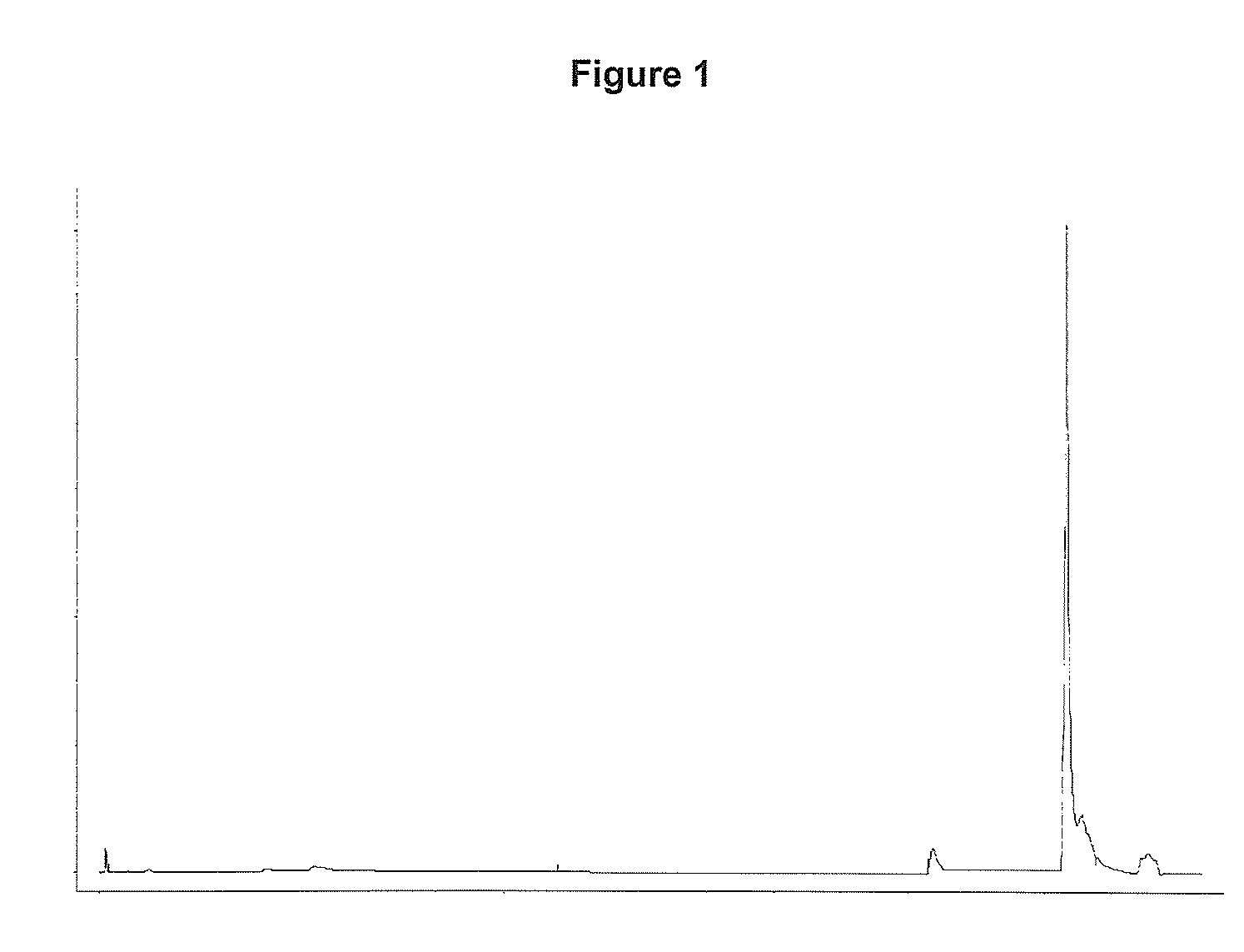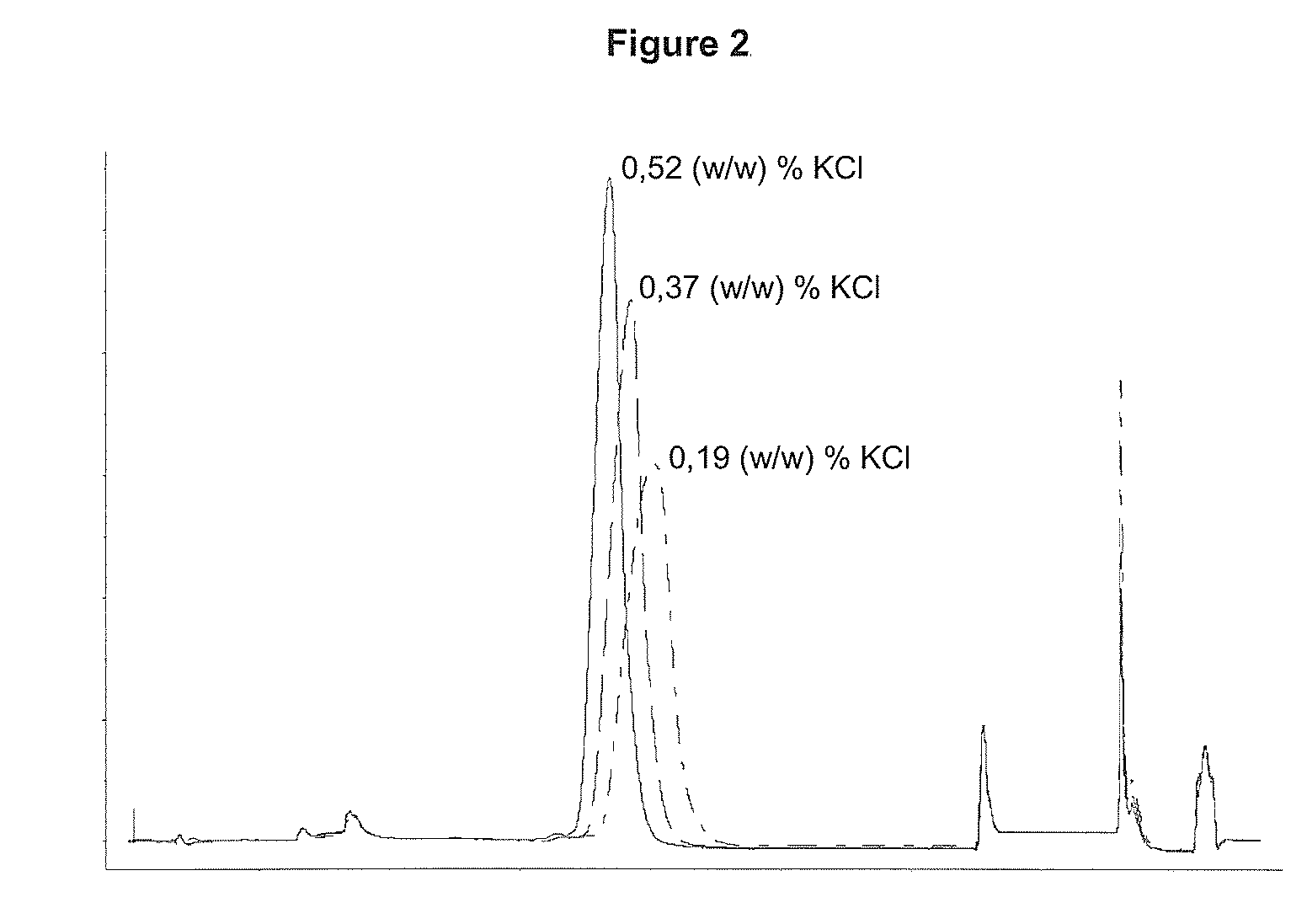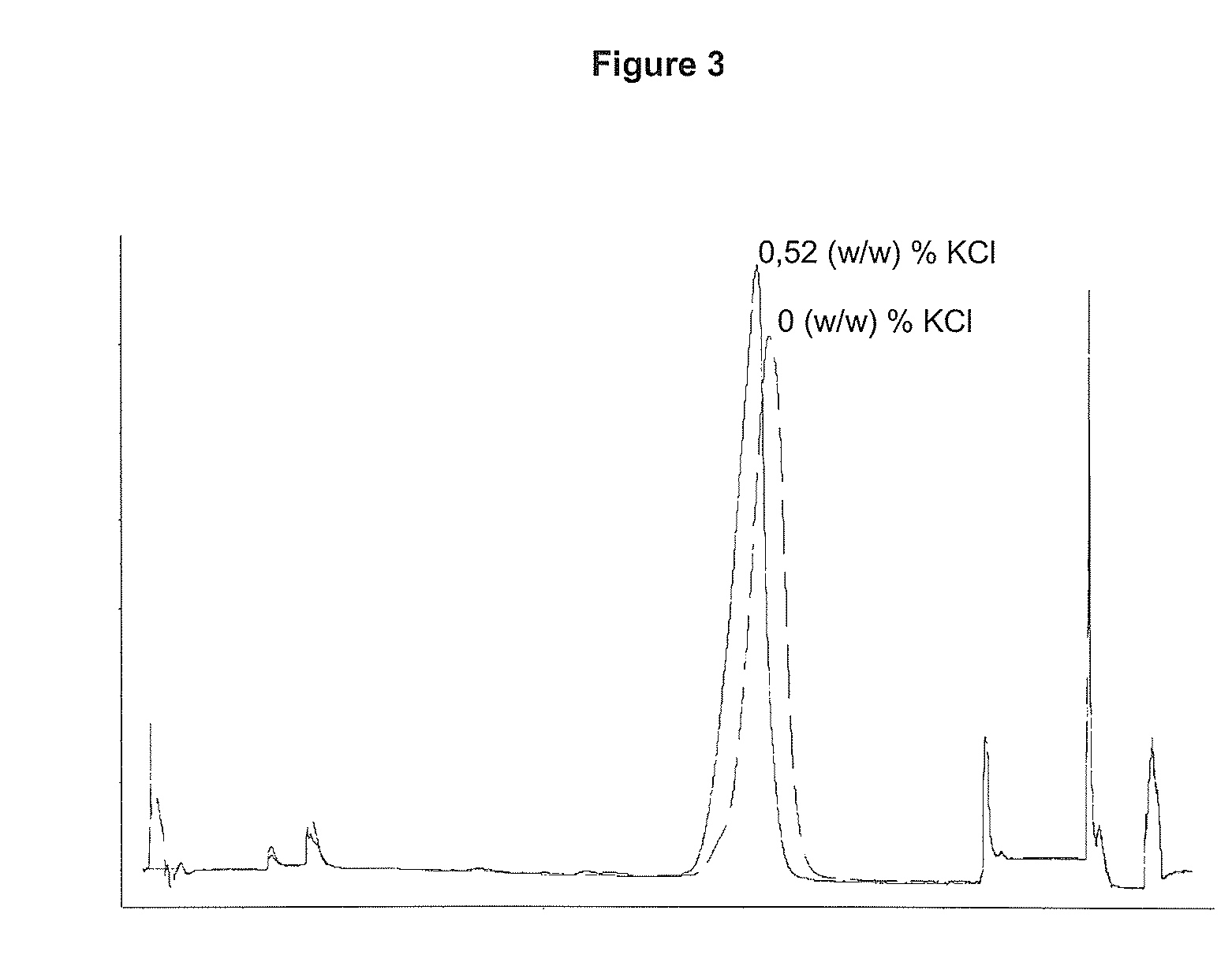Purification of proteins using preparative reverse phase chromatography (RPC)
a reverse phase chromatography and protein technology, applied in the field of new chromatographic methods, can solve problems such as being considered unsuitable for native proteins
- Summary
- Abstract
- Description
- Claims
- Application Information
AI Technical Summary
Benefits of technology
Problems solved by technology
Method used
Image
Examples
example 1
Performing RPC-Chromatography on a CN-propyl Substituted Silica Gel without Salt in the Solvents
[0066]A solution containing 10.6 mg of rhIL-21 was loaded onto a column (5×108 mm) containing a CN-propyl substituted silica gel (15 μm particle diameter, 300 Å pore size). Prior to load the column was equilibrated with 4 CV (column volume) 20 (w / w) % ethanol, 0.21 (w / w) % Tris, pH 7.0. Unbound protein was washed out with 3 CV 20 (w / w) % ethanol, 0.21 (w / w) % Tris, pH 7.0. rhIL-21 was eluted with a linear gradient over 12 CV from 20-96 (w / w) % ethanol contained in 0.21 (w / w) % Tris, pH 7.0. The column was washed with 8 CV 96 (w / w) % ethanol, 0.21 (w / w) % Tris, pH 7.0 and 5 CV water for injection (WFI).
[0067]The column was regenerated with 5 CV 60 (w / w) % 1-propanol 0.21 (w / w) % Tris, 0.52 (w / w) % KCl, pH 7.0.
[0068]The purification was performed at a flow rate of 30 column volumes pr. hour (CV / h) and at room temperature.
[0069]Chromatogram is shown in FIG. 1. From the chromatogram it is see...
example 2
Performing RPC-Chromatography on a CN-propyl Substituted Silica Gel with 0.19 (w / w) %, 0.37 (w / w) % or 0.52 (w / w) % KCl Respectively Added as Salt to the Chromatographic Solvents
[0070]Three chromatographic runs were performed as described below. Only difference between the three runs was the amount of KCl added to the solvents, se table 1:
[0071]A solution containing 10.6 mg of rhIL-21 was loaded onto a column (5×108 mm) containing a CN-propyl substituted silica gel (15 μm particle diameter, 300 Å pore size). Prior to load the column was equilibrated with 4 CV (column volume) 20 (w / w) % ethanol, 0.21 (w / w) % Tris, X (w / w) % KCl (for X see table 1), pH 7.0. Unbound protein was washed out with 3 CV 20 (w / w) % ethanol, 0.21 (w / w) % Tris, X (w / w) % KCl (for X see table 1), pH 7.0. rhIL-21 was eluted with a linear gradient over 12 CV from 20-80 (w / w) % ethanol contained in 0.21 (w / w) % Tris, X (w / w) % KCl (for X see table 1), pH 7.0. The column was washed with 8 CV 80 (w / w) % ethanol, 0.2...
example 3
Performing RPC-Chromatography on a di-methyl butyl Substituted Silica Gel with 0 (w / w) % or 0.52 (w / w) % Respectively Added as Salt to the Chromatographic Solvents
[0076]Two chromatographic runs were performed as described below. Only difference between the two runs was the amount of KCl added to the solvents, se Table 2:
[0077]A solution containing 10.6 mg of rhIL-21 was loaded onto a column (5×105 mm) containing a di-methyl butyl substituted silica gel (15 μm particle diameter, 300 Å pore size). Prior to load the column was equilibrated with 4 CV (column volume) 20 (w / w) % ethanol, 0.21 (w / w) % Tris, X (w / w) % KCl (for X see Table 2), pH 7.0. Unbound protein was washed out with 3 CV 20 (w / w) % ethanol, 0.21 (w / w) % Tris, X (w / w) % KCl (for X see Table 2), pH 7.0. rhIL-21 was eluted with a linear gradient over 25 CV from 20-70 (w / w) % ethanol contained in 0.21 (w / w) % Tris, X (w / w) % KCl (for X see Table 1), pH 7.0. The column was washed with 5 CV 70 (w / w) % ethanol, 0.21 (w / w) % Tri...
PUM
| Property | Measurement | Unit |
|---|---|---|
| chromatographic temperature | aaaaa | aaaaa |
| concentration | aaaaa | aaaaa |
| concentration | aaaaa | aaaaa |
Abstract
Description
Claims
Application Information
 Login to View More
Login to View More - R&D
- Intellectual Property
- Life Sciences
- Materials
- Tech Scout
- Unparalleled Data Quality
- Higher Quality Content
- 60% Fewer Hallucinations
Browse by: Latest US Patents, China's latest patents, Technical Efficacy Thesaurus, Application Domain, Technology Topic, Popular Technical Reports.
© 2025 PatSnap. All rights reserved.Legal|Privacy policy|Modern Slavery Act Transparency Statement|Sitemap|About US| Contact US: help@patsnap.com



